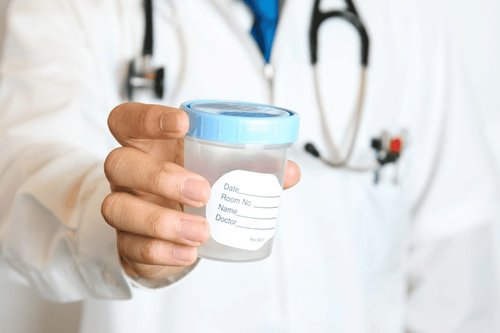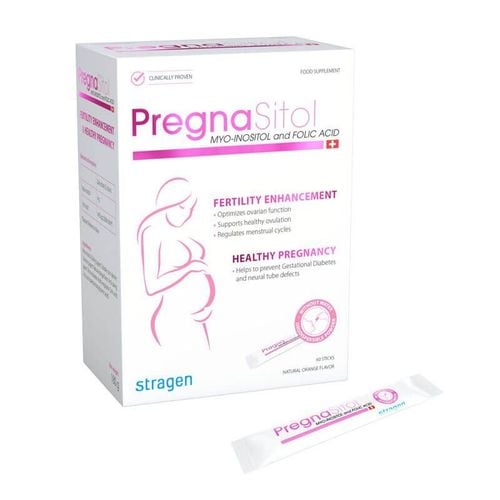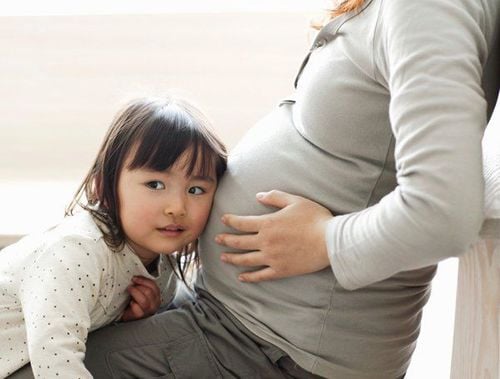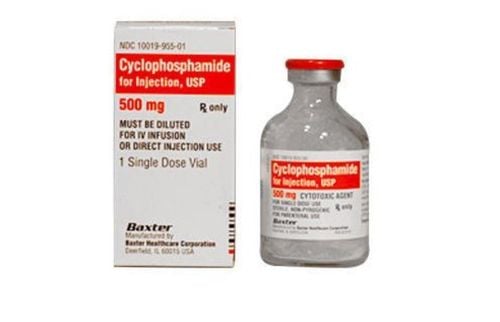This is an automatically translated article.
The article is professionally consulted by Resident Doctor, Master Nguyen Thi Tam - Clinician - Reproductive Support Center - Vinmec Times City International Hospital. The doctor has expertise in assisted reproduction.Infertility is a condition in which a couple does not become pregnant after 12 months of living together, having normal intercourse and not using any contraception. Infertility is classified into primary infertility and secondary infertility. So what is secondary infertility, how is secondary infertility different from primary infertility, the following article will help better understand this issue.
1. What is secondary infertility?

Infertility is a condition in which a couple does not get pregnant after 12 months of living together, having normal intercourse without using contraception. However, for the case of the wife over 35 years old, this time of not getting pregnant is only about 6 months to be evaluated for infertility.
Primary infertility is infertility in couples where the wife has never been pregnant.
Secondary infertility is infertility in couples who have had children (or pregnancies, including miscarriages).
Usually, the common psychology of couples is quite subjective in this matter because they think that after having a baby, everything will be fine. But in fact, many couples feel quite surprised and embarrassed when they discover they have secondary infertility.
About 40% of infertility cases have male causes, 40% have female causes, 10% are due to both sides, and the remaining 10% have unexplained infertility. In order to treat infertility, both husband and wife need to go to the doctor to find out the cause, from which there will be a reasonable treatment plan.
2. What causes secondary infertility?
Secondary infertility has many causes, common causes of secondary infertility include:
Causes of secondary infertility in men:
Abnormalities in sperm production, activity or transport in men such as hypogonadism, erectile dysfunction, ejaculation disorder, vasectomy, low sperm count, weakness, deformity... Causes of secondary infertility in women:
Causes related to Fallopian tubes: Damage, inflammation, blockage of the fallopian tubes leading to ovum and sperm not being able to meet for fertilization, infection, pelvic adhesions, endometriosis. Causes related to the ovaries: Disorders in the functioning of the ovaries, ovulation disorders, polycystic ovary syndrome, endometriosis in the ovaries... Causes related to the uterus: Uterine adhesions, uterine polyps, uterine fibroids, uterine malformations... Age-related causes: Female fertility will decrease with age, women after the age of 35 will have difficulty get pregnant much more Complications related to previous pregnancies, or complications related to previous surgery.
3. When to see a doctor?

Usually a couple after a year of regular sex, without using any contraception and still not conceiving, should see a specialist (if the wife is over 35 years old, she should see a doctor). after 6 months). Cases with underlying medical conditions affecting fertility (such as endometriosis) should seek medical attention sooner.
4. How will the examination process take place?
The examination process for secondary infertility is similar to that of primary infertility, including a clinical examination and performing some laboratory techniques on both husband and wife.4.1 Evaluation of male fertility The examination and evaluation of male infertility includes taking history, clinical examination and performing semen analysis.
History taking will include previous fertility history, medical and surgical history, sexual dysfunction, and history of drug use, smoking, alcohol and drug use.
Clinical examination will mainly examine to detect abnormalities (if any) of the testicles and penis.
For semen analysis, if the result is abnormal, it should be repeated after at least 1 month, in a facility using World Health Organization (WHO) guidelines.
4.2 Evaluation of fertility in the wife Take a history of obstetrics and gynecology: History of previous pregnancies, complications of previous pregnancies, menstrual history, menstrual disorders, ejaculation disorders ovule.
Clinical examination to detect abnormalities of the genital tract such as inflammation, polyps, uterine fibroids, ovarian cysts...
A blood count test to rule out hemolytic anemia such as thalassemia, thyroid function, blood prolactin.
Survey of the uterus and fallopian tubes: conventional gynecological ultrasound, survey ultrasound, uterine reconstruction to detect uterine polyps, uterine adhesions, uterine malformations... uterus - fallopian tubes with contrast evaluation of fallopian tubes.
Evaluation of Ovarian Reserve: One of the checks to do for couples with fertility problems is an assessment of ovarian reserve. Women who are elderly or have had previous ovarian surgery face an increased risk of decreased ovarian function or reserve. The most common evaluations are measurement of AMH levels and secondary follicle-count ultrasound on day 2 of the menstrual cycle.
In some cases of repeated implantation failure, the wife may be ordered to evaluate the uterine lining such as: Test for immunological analysis of the uterine lining (matrice lab) , evaluation of the implantation record (ERA test), hysteroscopy, laparoscopy when indicated.
5. Treatments for Secondary Infertility
Couples with secondary infertility should see a specialist as soon as possible, because the treatment process also takes a certain time, so the earlier intervention is beneficial, especially for those who are pregnant. wife is 35 years old.
Depending on the cause of secondary infertility, doctors will guide different treatment. Most secondary infertility can be overcome, but in general, there are 3 methods depending on the severity:
Medical treatment with drugs: Doctors will prescribe treatment depending on the condition and severity of the disease, at the same time, give reasonable diet, exercise and rest regimens to make conception easier;
Surgery: in cases of deformity, structural changes of the reproductive organs help to adjust and bring everything back to normal;
Assisted Reproductive Measures: There are now a lot of assisted reproductive methods to help couples with secondary infertility, such as intrauterine insemination (IUI), ovarian stimulation (with included). without intrauterine insemination) or in vitro fertilization (IVF). Each method has different advantages and disadvantages and different success rates, choosing which method needs to be evaluated for each specific case as well as depends on the decision of each couple.
Established in November 2014, up to now, Vinmec IVF fertility center has performed fertility support for over 1000 infertile couples with a success rate of over 40%. This rate is equivalent to developed countries such as the UK, USA, Australia,...
The center gathers a team of leading experts in the field of obstetrics and gynecology nationally and internationally, trained in centers leading in the world such as in the US, Singapore, Japan, Australia and famous fertility centers in the world.
With a high level of expertise and extensive experience, Vinmec IVF Center's experts are capable of synchronously and comprehensively deploying the most advanced assisted reproductive techniques today, helping realize the dream of becoming a parent of hundreds of families across Vietnam.
Please dial HOTLINE for more information or register for an appointment HERE. Download MyVinmec app to make appointments faster and to manage your bookings easily.
Articles refer to the source: mayoclinic.org














